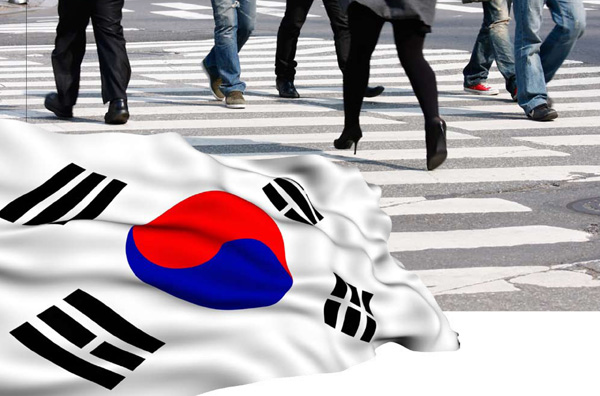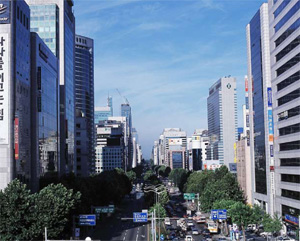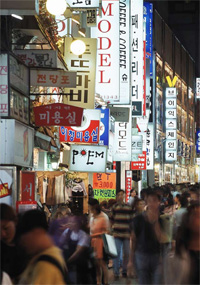What makes Brand Korea tick? What are the HVACR best practices & tech. innovations.
The GCC reportedly accounts for 60% of all Korean EPC contracts abroad amounting to US$ 43.3 billion. What makes Brand Korea tick? What are the HVACR best practices and technological innovations from the Land of the Morning Calm? By Valeria Camerino

In the last few years, South Korea has emerged as a key trade and investment partner of the Gulf countries and UAE in particular.
According to figures released by Republic of Korea’s Ministry of Foreign Affairs and Trade, 2011 bilateral trade between the two countries amounted to a total of US$ 22 billion, with exports to the UAE reaching US$ 7.26 billion, and imports rising to US$ 14.75 billion as oil prices increased.
Indeed, the same source reveals that, with a total of 87,230,000 barrels of crude per year, the UAE is the fifth largest exporter of oil to Korea, as well as the Republic’s largest export market in the Middle East.
Quoting data from Korea Trade Information Service (Kotis), a recent Gulf News report highlights that UAE’s imports from Korea consist largely of machinery (33%), electronics (25%), and steel/metal items (22%).
UAE’s imports of electronics from Korea, on the other hand, surged from US$538 million in 2000 to almost US$800 million by 2011, while automotive imports grew from US$55 million to US$843 million over the same period.
According to analysts, UAE-South Korea trade will grow by 21% in 2012 to US$26.6 billion.
 This could be due to an increase of imports of goods for the construction industry such as heavy machinery and building materials, particularly in Abu Dhabi.
This could be due to an increase of imports of goods for the construction industry such as heavy machinery and building materials, particularly in Abu Dhabi.
“The Korean system air conditioning market reached about US$1.8 billion for the residential air conditioning segment last year,” says D. Y. Kim, LG Gulf President.
He points out that the local players are very competitive in the Korean HVAC market. However, he claims, “LG Electronics is the strongest AC manufacturer, holding over 60% market share in the Korean residential air conditioning market and over 50% of the Korean VRF market.”
With regard to the Middle Eastern commercial air conditioning (CAC) market, the company registered US$125 million in sales last year and is expected to register US$ 175.6 million for 2011, representing a growth of 38% on the previous year.
“LG has enabled such impressive growth through collaboration with top-tier local sales partners as well as its strength in VRF systems which have far greater potential for future growth compared to conventional single commercial air conditioning products,” Kim says.
He claims that the impressive energy efficiency and powerful performance of LG’s products should prove to be central in the company’s growth, as regional governments become increasingly stricter when it comes to regulations associated with energy consumption.
LG’s latest VRF system, Multi VIII Heat Pump, which, Kim says, was the first in the HVAC industry to receive the Carbon Free certification from US-based nonprofit organization Carbonfund.org, maximises energy efficiency in commercial environments with a 4.58 coefficient of performance (COP) and a 20HP capacity per unit, which translates to space savings of up to 50%.
 According to the company, Hydro Kit offers an eco-friendly solution for floor and water heating, as it allows 77% savings in energy consumption and 51% less emissions compared to conventional boilers. “The world’s first variable water flow control system has been developed for use in water cooled VRF systems to cut down energy consumption by up to 71% by reducing the energy required to operate the circulation pump,” Kim claims.
According to the company, Hydro Kit offers an eco-friendly solution for floor and water heating, as it allows 77% savings in energy consumption and 51% less emissions compared to conventional boilers. “The world’s first variable water flow control system has been developed for use in water cooled VRF systems to cut down energy consumption by up to 71% by reducing the energy required to operate the circulation pump,” Kim claims.
Other technologies include LG’s Therma V which takes advantage of heat in the air to deliver energy efficiency that is four times greater than conventional heating, while LG’s Prestige Inverter V air conditioners for residential applications reportedly consume up to 74% less energy compared to non-inverter models. It also includes a skin and health care function via plasma technology.
As part of its commitment to promote sustainable and eco-friendly products, the company is considering various alternative refrigerants, including R290 and R32.
Additionally, it will continue to research and develop new alternative refrigerants with the aim of satisfying market needs concerning capacity, efficiency and eco-friendliness.
Kim claims that LG is the only company that offers integrated building control products and solutions combining HVAC and lighting solutions. “LG’s HVAC & Energy Solution can reduce building energy consumption by 30%,” he says.
Through the recent acquisition of LS Mtron’s chiller business, LG recently strengthened its production of chillers for air conditioners used in many facilities such as complex and public buildings, offices, and shops, enhancing the company’s SAC (System Air Conditioning) line-up.
With regard to standard compliance, the company has recently partnered with Intertek, a global inspection, product testing and certification company, to provide officially certified levels of energy efficiency and safety that satisfy various standards across numerous markets.
“The introduction of refrigerant R410A, the European standard refrigerant, into the Middle East is placing great demand to meet requirements comparable to Europe,” Kim explains.
As he explains, the company’s Multi V III solution is one of the first VRF systems certified by AHRI. This ensures that building owners receive verified ratings which comply with all national energy codes.
Kim expects the system air conditioning is expected to grow further in the near future. “In particular, [the field of] central building management systems that can control all the air conditioning and energy consumption in large buildings is a very promising market,” he says.
Despite tough competition, he forecasts LG AE’s 2012 sales revenues to grow by 10%. “The Korean HVAC industry is becoming very competitive. Consumers are looking for the latest and most cost-efficient products in the market,” he observes. “Taking that into consideration, LG has worked hard to provide the market with just that. Through a full line-up of HVAC systems and technological innovation, LG AE anticipates an increase in 2012 sales by 10%.”
Copyright © 2006-2025 - CPI Industry. All rights reserved.